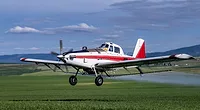Antibiotic Use in SE Asian Food Animals Must be Curbed to Protect Global Health, Say Researchers

Image credit: Martijn Vonk via Unsplash
The world could be rendered defenseless against the next global pandemic if antimicrobial use in Southeast Asian animal agriculture is not curbed, researchers from RMIT University have warned.
RMIT’s cautionary statement was made in the form of a scientific review that covered the twin issues of veterinary drug residues in livestock and antimicrobial resistance (AMR) among pathogens in food animals, within the context of Southeast Asia. The focus on Southeast Asian animal agriculture is due to its relevance to Australia, where RMIT University is located, as Australia and Southeast Asia have strong economic ties; but also because of its relevance to the rest of the world, as, according to the researchers, Asia is a hotspot of AMR in animals, with Southeast Asia being an epicenter.
Southeast Asia is a significant producer of food animals, with more than 2.9 billion chickens, 258 million ducks, 7 million cattle, 15.4 million buffaloes, 77.5 million pigs, 13.7 million sheep, and 30.6 million goats in the region, according to the Food and Agriculture Organization of the United Nations (FAO). Globalization has led to the international trade of meats, increasing the opportunities for the spread of AMR worldwide.
AMR is a known threat to global public health, and it has been recognized by the World Health Organization (WHO) as one of the top ten health challenges facing humanity in the 21st century. Some reports have predicted that, by 2050, drug-resistant infections will cause 300 million premature deaths worldwide, and will outstrip the number of cancer deaths.
At present, AMR kills more than 700,000 people each year.
Intertwined but Distinct Problems: Drug Residues Versus Drug Resistance
In their study, the RMIT researchers emphasize the importance of differentiating between the issues of AMR and veterinary drug residues in animal products, in order to enable policymakers and industry to develop appropriate interventions to address residue and resistance issues in Southeast Asia. The overuse of antibiotics in animal agriculture—such as for growth promotion—is a leading cause of the rise of both AMR and the presence of residues in animal-derived foods.
Looking for quick answers on food safety topics?
Try Ask FSM, our new smart AI search tool.
Ask FSM →
AMR occurs when pathogens are exposed to a drug and develop a resistance against it, and, on farms, the presence of antibiotics in food, soil, water run-off, and animal waste can contribute to this resistance developing. Resistant bacteria in food animals may be transferred to humans through the food chain or by direct contact.
Residues in food animals are chemicals that persist in animal tissues or products after livestock are exposed to or administered the substances. Among other risks to human health, consuming animal products with antimicrobial residues can introduce antibiotic-resistant pathogens to humans.
The presence of drug residues in foods is much more easily measured—and therefore regulated, with many countries having legal maximum residue limits for different chemicals in foods—in comparison to AMR. Although the scientific evidence linking high levels of drug residues in food animals to high levels of AMR is growing, the relationship is complex and may be influenced by a multitude of factors, causing variability in the relationship between resistance and residues. The RMIT researchers state that it is important to clarify this relationship to effectively address the threat of AMR.
Southeast Asia’s Unique Residue and Resistance Challenges and Recommendations for Control
Antimicrobial use is much more heavily regulated in some countries, such as Australia, in comparison to others, like those in the Southeast Asian region, assert the RMIT researchers. In Southeast Asian countries, factors like small-scale farming being common, limited veterinary services, and the prominence of informal food markets present challenges to implementing strict antimicrobial regulatory measures and AMR surveillance systems.
In Southeast Asia, several studies have demonstrated multidrug resistance in chicken, duck, and pigs, including resistance to classes of antibiotics used to treat humans, such as fluoroquinolones and third-generation cephalosporins, as well as to critically important colistin.
Southeast Asian governments have recognized the problem of AMR arising from local animal agriculture and have taken some steps to regulate antimicrobial use, but as the issue is pressing, RMIT’s researchers have recommended six ways in which Southeast Asian policymakers can address AMR and residues in food animals:
- Recognize the difference between residue and resistance to tackle AMR challenges with appropriate interventions
- Collaborate regionally and develop tailored strategies to navigate disease outbreaks, environmental concerns, residue levels, and AMR
- Implement country-specific awareness campaigns, robust surveillance of residues and resistance, appropriate regulations, and responsible antimicrobial use to reduce resistance risks
- Foster international cooperation and initiatives to address resistance comprehensively, ensuring a united front against both residue and resistance
- Strengthen public health systems and preparedness
- Promote innovation and research in alternative antimicrobial solutions, sustainable farming practices, and advanced diagnostics to stay ahead of evolving challenges.
"There is a big pandemic waiting to happen in the form of AMR," said veterinarian and RMIT Professor of Bioscience Rajaraman Eri, Ph.D., M.V.Sc., who co-authored the report. "We're going to face a situation in the world where will run out of antibiotics. That means we will not be able to treat infections." The full article, published in the International Journal of Food Science and Technology, can be accessed here.









